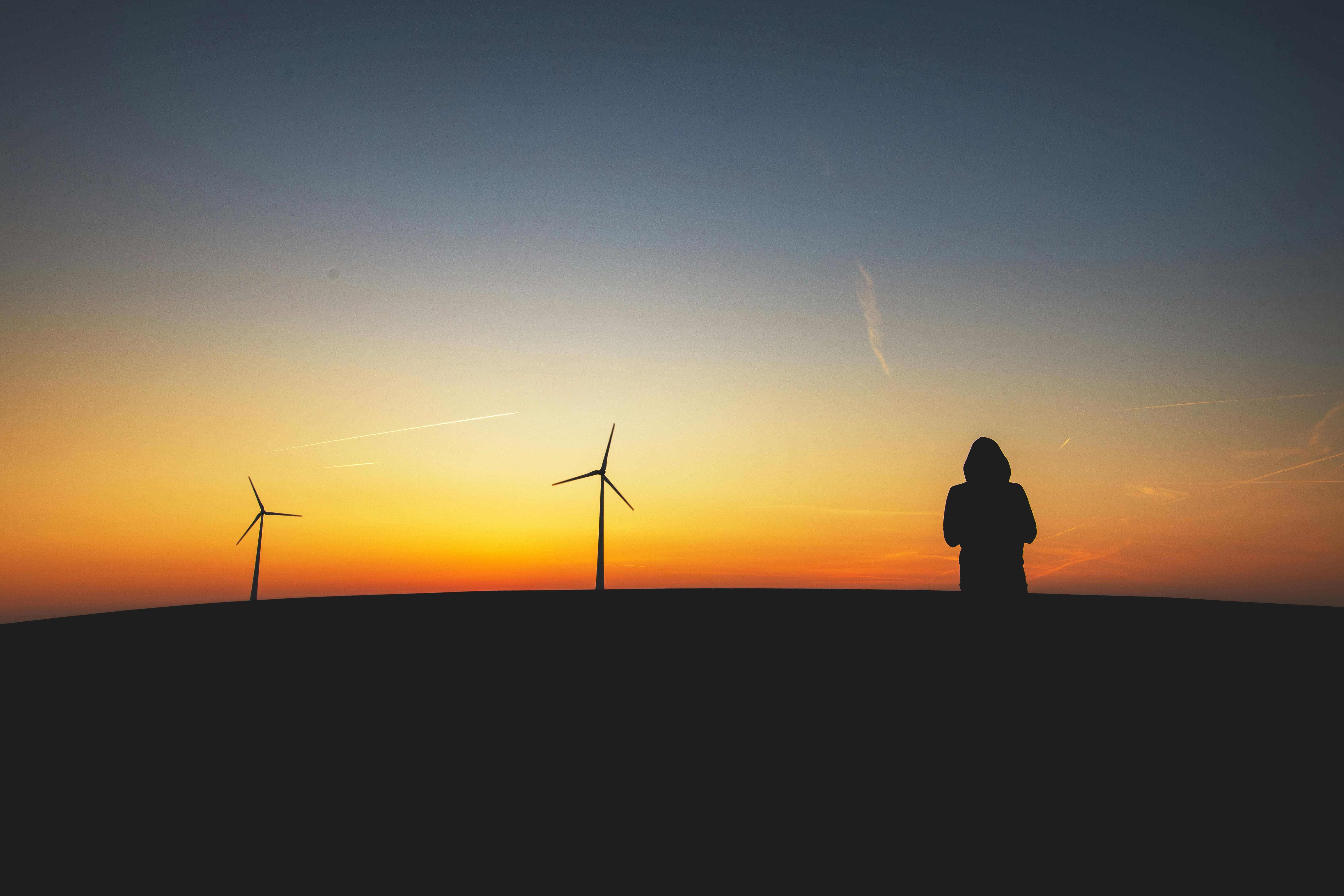What is a PPA contract and how can it help your company save and become more sustainable?


A PPA contract allows your company to purchase renewable energy long-term at a stable price, helping to reduce costs, protect against electricity market volatility, and improve compliance with ESG goals. It is an accessible solution even for companies with multiple sites or medium consumption, especially with specialized advisory support.
A PPA (Power Purchase Agreement) is essentially a long-term contract between a company and an energy generator, typically a renewable one. Instead of purchasing electricity at market prices, your company agrees to buy it directly from a producer (such as a solar or wind farm) at a predetermined price and for a set duration, usually ranging from 5 to 15 years.
This arrangement allows access to cleaner energy with a more predictable and competitive price. If your company manages multiple supply points, a PPA enables you to build a centralized and efficient corporate energy strategy.
There are several types of PPAs, but the most common include:
On-site PPAs, where the generator installs solar panels directly on your premises. This is ideal if your company has available rooftop or land space and wants to take advantage of it without initial investment.
Off-site PPAs, where the energy is generated in a different location and delivered through the electrical grid. This option is useful for businesses without their own space.
A physical PPA involves the direct purchase of electricity delivered through the grid.
A financial or virtual PPA, on the other hand, is a financial compensation agreement based on market price, without physical delivery of energy.
The right choice depends on your energy consumption, location, investment capacity, and strategic objectives. For companies with multiple locations, off-site physical PPAs tend to be the most flexible and scalable option.
PPAs provide cost predictability, protecting your company from electricity market volatility. Over the long term, the price is usually more competitive than the standard market.
Additionally, it enables access to 100% renewable energy, which improves your ESG reporting and reduces Scope 2 emissions. It also has a positive impact on your corporate reputation with clients, investors, and employees. Signing a PPA shows a strong commitment to sustainability and a forward-looking business strategy.
Although PPAs were traditionally signed by large industrial companies, they are now accessible to a wider range of sectors. Companies with medium or high energy consumption, operating continuously and seeking a stable, sustainable solution, can benefit from a PPA.
For instance, hotels and tourist accommodations typically have constant energy use due to services such as HVAC systems, 24/7 lighting, laundry, and industrial kitchens. These characteristics align well with PPAs, which help keep costs under control even in high-demand areas like coastal regions or islands.
Restaurant chains and franchises also benefit, as they often have many supply points with extended operating hours and high energy usage in refrigeration and cooking. By aggregating this consumption, they can reach the volumes needed to negotiate favorable conditions.
Retail companies with multiple physical stores are another good fit. While a single store may not justify a PPA, the combined consumption of the entire chain often does. Using renewable energy can also strengthen brand positioning, especially in fashion, tech, or food sectors.
Logistics and manufacturing industries are natural candidates, as their facilities typically operate for long hours or in shifts, creating stable consumption patterns that maximize contract benefits.
Lastly, companies with active ESG policies or that must report emissions to investors or stakeholders can use PPAs as a strategic financial tool aligned with climate commitments and international standards.

Signing a PPA allows you to lock in a price for years, avoiding sudden spikes. This makes budgeting easier and enables long-term savings.
One of the most tangible benefits of a PPA is its direct impact on the electricity bill. By fixing or indexing the price with limits over several years, companies protect themselves from fluctuations in the electricity market. This provides financial stability, supports realistic budgeting, and reduces exposure to risks linked to energy crises or unexpected market price increases.
For example, a company with 15 locations in Spain signed a PPA at €65/MWh while the market price was above €100/MWh. This agreement helped the company save over 30% annually, while maintaining its sustainability commitment through the use of renewable energy.
Beyond the price, PPAs also simplify administrative processes by centralizing electricity supply management. This is particularly useful for businesses with multiple consumption points, avoiding the need to manage separate contracts, tariffs, and conditions for each site.
Long-term visibility into energy costs also helps free up resources for other strategic areas of the business, enabling better decision-making around investments, expansion, or digitalization.
While PPAs offer numerous benefits, they also involve business risks that need to be understood and properly managed.
One of the main risks is the long-term commitment, as these contracts typically last between 5 and 15 years. This requires a certain level of operational stability and visibility into future energy needs.
Another risk is under-consumption, where the company commits to more energy than it actually needs. This can occur if business activity slows down, supply points close, or operations become more efficient. It’s therefore crucial to accurately forecast consumption and choose PPAs with flexibility clauses.
There’s also counterparty risk, especially when working with small producers or projects still under development. If the energy generator fails to deliver on time, penalties may apply, or the company may need to buy electricity from the spot market at higher prices.
To manage these risks, it is essential to conduct a detailed preliminary analysis, obtain specialized advisory support, and negotiate exit clauses, volume adjustments, and supply guarantees.
Negotiating a PPA is not a standard process but a strategic operation that must align with your company’s energy and financial needs.
The first step is to define the most appropriate contract type—fixed, indexed, or with price caps/floors—and the consumption volume to commit, based on historical and projected usage.
During the negotiation, it’s essential to review elements such as contract duration, base price, terms for periodic revisions, supplier guarantees (such as bank guarantees or performance insurance), and penalties for early termination or non-compliance.
It’s also important to check the generator’s experience, financial situation, and whether the project is operational or still in development. In the latter case, the contract should include maximum start-up deadlines and compensatory clauses in case of delays.
A legal and technical team experienced in energy contracts should support the negotiation to avoid common pitfalls and ensure the contract terms are clear, balanced, and sustainable over time.
More and more companies need to prove their sustainability efforts with data. In this context, PPAs have become a key tool to reduce Scope 2 emissions, which are those associated with purchased electricity.
Signing a PPA with a renewable producer allows you to verify that part or all of your consumed energy comes from clean sources. This is certified through Guarantees of Origin (GO), official documents that can be included in sustainability reports or non-financial disclosures.
PPAs also help companies comply with the EU green taxonomy, improve their ESG ratings, and access funds or investors who prioritize positive environmental impact.
Integrating a PPA into your ESG strategy provides not only reputational value, but also financial advantages, especially as companies are increasingly evaluated on their decarbonization and energy transition commitments.
Yes, even if your consumption isn’t high at a single site. Companies with multiple locations can use a demand aggregation model, combining usage from all sites to negotiate a single PPA with more competitive terms.
This strategy is particularly useful for retailers, franchises, hotels, or restaurant chains, where each consumption point is relatively small, but the total volume is significant.
Another alternative is to participate in a collective purchase or syndicated PPA, where several companies jointly contract with a single generator, reducing risks and increasing bargaining power. These options are often facilitated by specialized utility management firms, such as Polaroo.
Thanks to these solutions, PPAs are no longer exclusive to large corporations, but are now available to medium-sized companies with a strategic mindset.
Companies that offer energy management services play a key role in implementing PPAs, especially for organizations without in-house technical expertise.
A provider like Polaroo can assist from the early analysis stage, identifying consumption patterns, calculating optimal volume, and assessing the technical and financial feasibility of the contract. They then manage supplier scouting, offer evaluation, and contract negotiation tailored to your needs.
They also facilitate PPA operational integration, ensuring billing, reporting, and energy accounting are correctly aligned. They act as the main point of contact with the generator throughout the contract’s duration, handling incidents and proposing continuous improvements.
In short, working with an expert energy partner not only reduces risks, but also maximizes the economic and environmental benefits of the agreement.
Our service fees pay for themselves with the time and money saved by using Polaroo.